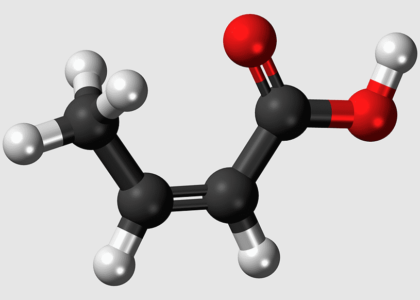The global automotive sensors market is projected to attain a valuation of US$ 19.2 billion in 2023 and is estimated to reach US$ 44 billion by 2033, expected to incline at a CAGR of 8.6% during the forecast period.
In recent times, the global automotive sensors market has experienced significant growth. The increased adoption of alternative fuels and vehicles plays a crucial role in reducing consumer fuel costs and enhancing the energy security of nations, thereby driving market development. Moreover, the growing prevalence of alternative fuel vehicles is expected to further boost market growth throughout the assessment period. Additionally, the increasing integration of new systems and technologies in automobiles is anticipated to have a positive impact on the market’s advancement in the coming years.
Get an overview about growth opportunities from 2023 to 2033 – Download this sample report:
https://www.futuremarketinsights.com/reports/sample/rep-gb-6612
Modern vehicle restraint systems employ side airbag pressure sensors for passenger car safety. Integrated into the side doors, these sensors transmit digital crash signals to the central airbag unit. Moreover, the air pressure sensor enhances engine efficiency by precisely controlling spark advances in gasoline and diesel engines. Consequently, the market is poised for development as pressure sensors find increasing use in both engine and vehicle safety systems.
In the next few years, the autonomous capabilities of commercially available vehicles are expected to advance rapidly. This progress is driven by stricter regulations and safety tests, particularly for emergency brake assist, as well as a growing emphasis on vehicle safety. Developed countries already mandate functions such as cruise control and lane-keep assist on all vehicles, while regulations for blind-spot monitoring, especially in Europe, are gaining traction.
To enable features like adaptive cruise control, these vehicles rely on long-range radar sensors, along with approximately two medium-range backward-facing radar sensors for blind spot detection. Additionally, up to 12 ultrasonic sensors are necessary for functionalities such as parking assistance. As the demand for autonomous driving features continues to grow, the utilization of high-precision sensors is expected to rise accordingly.
Key Takeaways
- The United States automotive sensors market is expected to grow with a CAGR of 8.2% during the forecast period.
- The demand for automotive sensors in India is expected to grow with a CAGR of 8.6% during the forecast period.
- By vehicle type, passenger vehicles are projected to grow with a CAGR of 9.4% during the forecast period.
- The market in China is expected to grow with a significant CAGR of 8.4% throughout the forecast period.
“Increasing use of pressure sensors in the engine and vehicle safety systems is expected to drive market growth during the forecast period,” comments an FMI analyst.
Direct Purchase of this Report: https://www.futuremarketinsights.com/checkout/6612
Competitive Landscape
The market for automotive sensors is highly competitive, with numerous prominent industry players making substantial investments in increasing their manufacturing capabilities.
The key industry players are NXP Semiconductors N.V., TE Connectivity, Continental AG, Denso Corporation, Robert Bosch GmbH, Infineon Technologies AG, STMicroelectronics, Texas Instruments Incorporated, Allegro Microsystems, LLC, CTS Corporation, Elmos Semiconductor, Sensata Technologies.
Some recent developments in the automotive sensors market are:
- In December 2022, Continental AG revealed its exclusive modules and sensors designed specifically for electromobility. The company showcased its Advanced Driver Assistance Systems (ADAS) integrated into the “CV3” SoC (System on Chip) family, which incorporates artificial intelligence (AI) technology from semiconductor startup Ambarella.
- In November 2022, Infineon Technologies AG launched the XENSIV TLE4971 family as the newest addition to their current sensor series designed for automotive applications. These devices provide accurate magnetic current sensing by utilizing proprietary temperature and stress compensation techniques, eliminating the negative impacts of magnetic cores such as hysteresis or saturation effects.
- In March 2022, CTS Corporation acquired TEWA Temperature Sensors SP. Zo.o. and its subsidiaries. This acquisition strengthens CTS’s temperature sensing platform and enhances its market presence in Europe.
Key Segments Profiled in the Automotive Sensors Market Industry Survey.
Sensor Type:
- Position Sensors
- Clutch Position Sensors
- Gear Position Sensors
- Throttle Position Sensors
- Crankshaft Position Sensors
- Steering Angle Position Sensors
- Camshaft Position Sensors
- Safety Sensors
- Seat Belt Sensors
- Brake Switch Sensors
- Door Switch Sensors
- Blind Spot Detection
- Night Vision Sensors
- Light Sensors
- Parking Sensors
- Cruise Control
- Impact Sensors
- Anti-theft Sensors
- Level Sensors
- Fuel Level Sensors
- Coolant Level Sensors
- Oil Level Sensors
- Oxygen Sensors
- Pressure Sensors
- Tire Pressure Sensors
- EGR Pressure Sensors
- Airflow Rate Sensors
- Temperature Sensors
- Engine Coolant Temperature Sensors
- Rain/humidity Sensors
- Oil/Fuel Temperature Sensors
- Battery Temperature Sensors
- Air Temperature Sensors
- Speed Sensors
- Wheel Speed Sensors
- Speedometer
Vehicle Type:
- Passenger Cars
- Compact
- Midsize
- Luxury
- SUVs
- Light Commercial Vehicles
- Heavy Commercial Vehicles
Sales Channel:
- Original Equipment Manufacturers
- Original Equipment Supplier Spare Parts
- Independent Aftermarket
Region:
- North America
- Latin America
- Europe
- Asia Pacific
- Middle East and Africa
Author
Nikhil Kaitwade (Associate Vice President at Future Market Insights, Inc.) has over a decade of experience in market research and business consulting. He has successfully delivered 1500+ client assignments, predominantly in Automotive, Chemicals, Industrial Equipment, Oil & Gas, and Service industries.
About Future Market Insights (FMI)
Future Market Insights, Inc. (ESOMAR certified, recipient of the Stevie Award, and a member of the Greater New York Chamber of Commerce) offers profound insights into the driving factors that are boosting demand in the market. FMI stands as the leading global provider of market intelligence, advisory services, consulting, and events for the Packaging, Food and Beverage, Consumer, Technology, Healthcare, Industrial, and Chemicals markets. With a vast team of over 5000 analysts worldwide, FMI provides global, regional, and local expertise on diverse domains and industry trends across more than 110 countries.
Contact Us:
Future Market Insights Inc.
Christiana Corporate, 200 Continental Drive,
Suite 401, Newark, Delaware – 19713, USA
T: +1-845-579-5705
For Sales Enquiries: sales@futuremarketinsights.com
Website: https://www.futuremarketinsights.com
LinkedIn| Twitter| Blogs | YouTube


